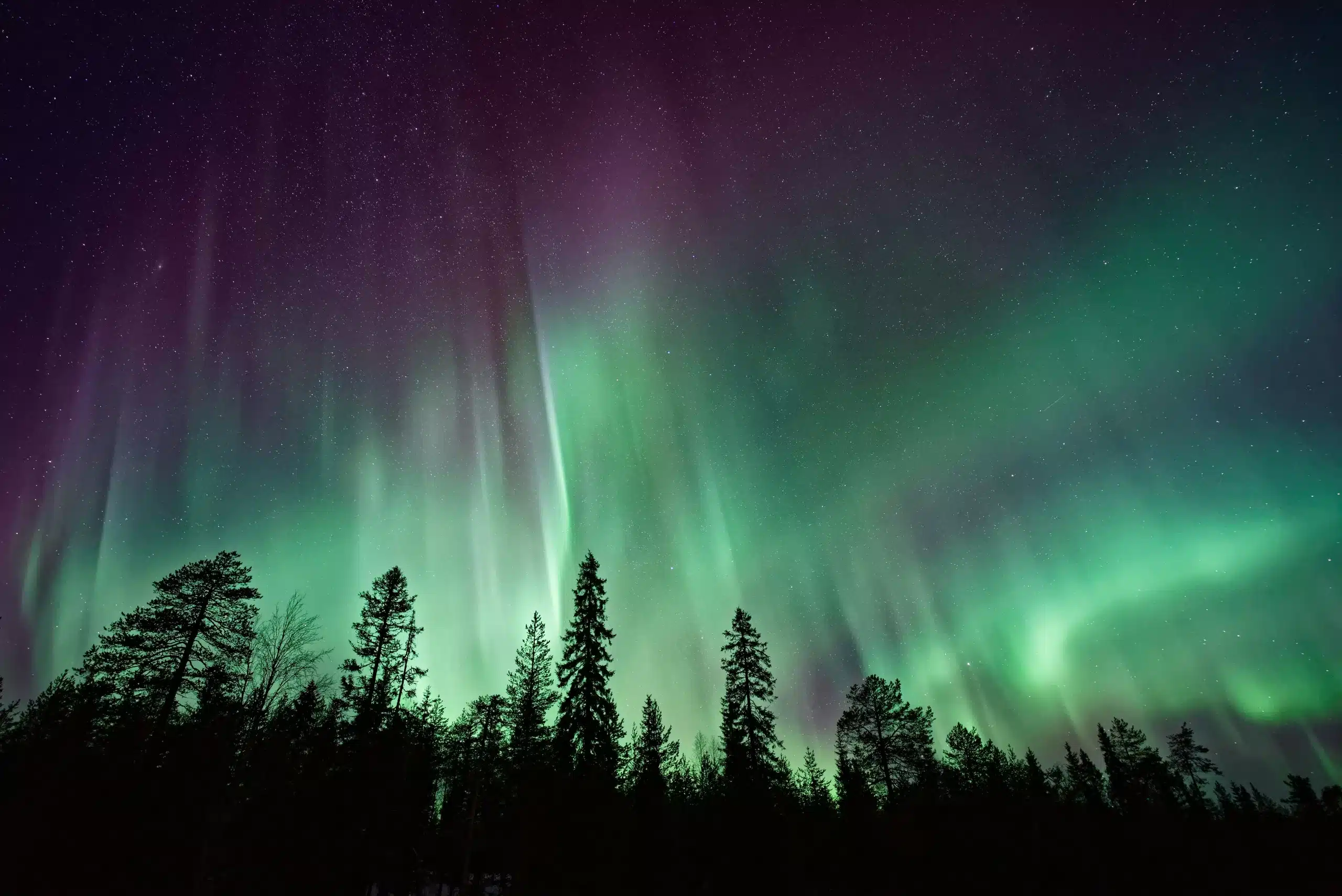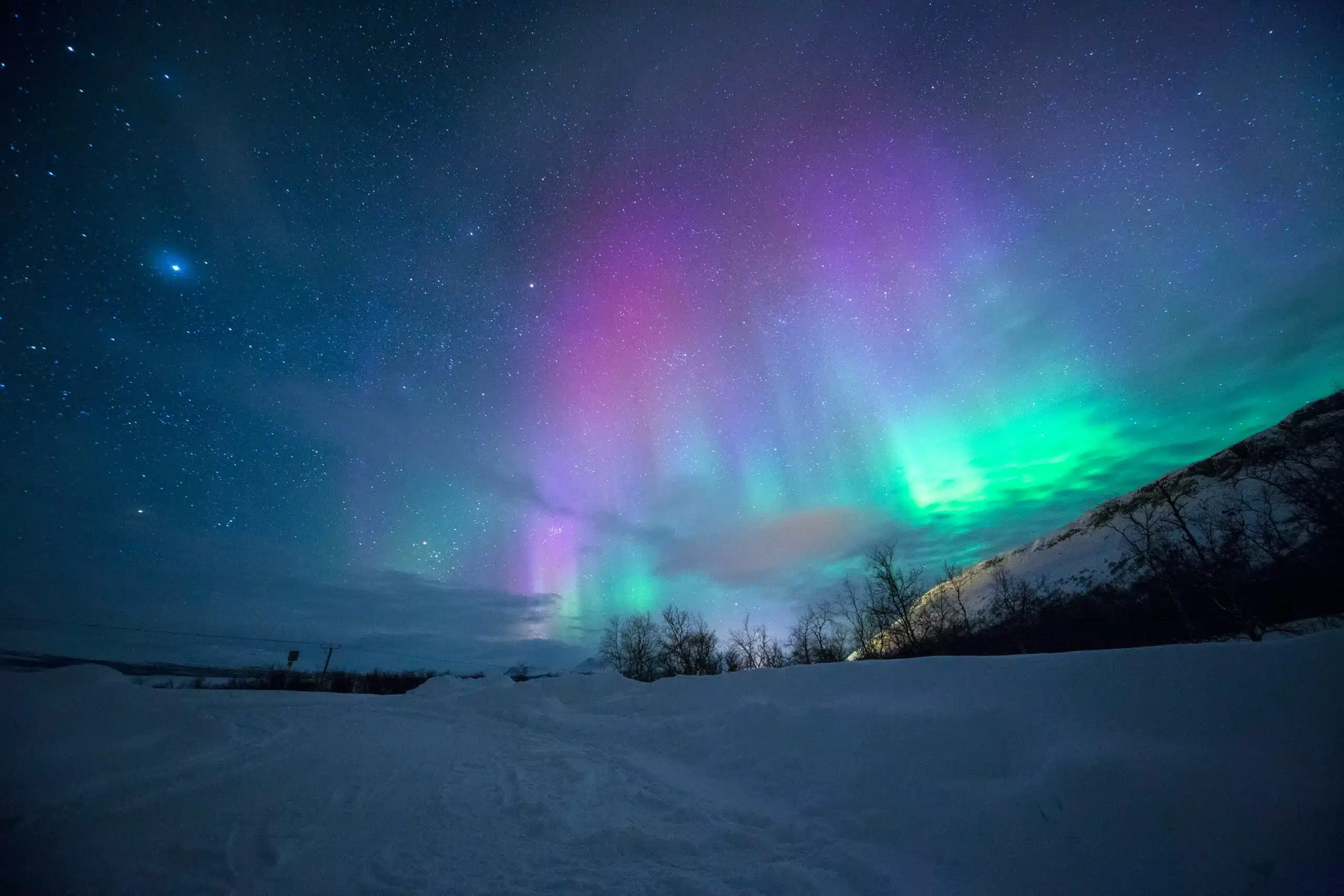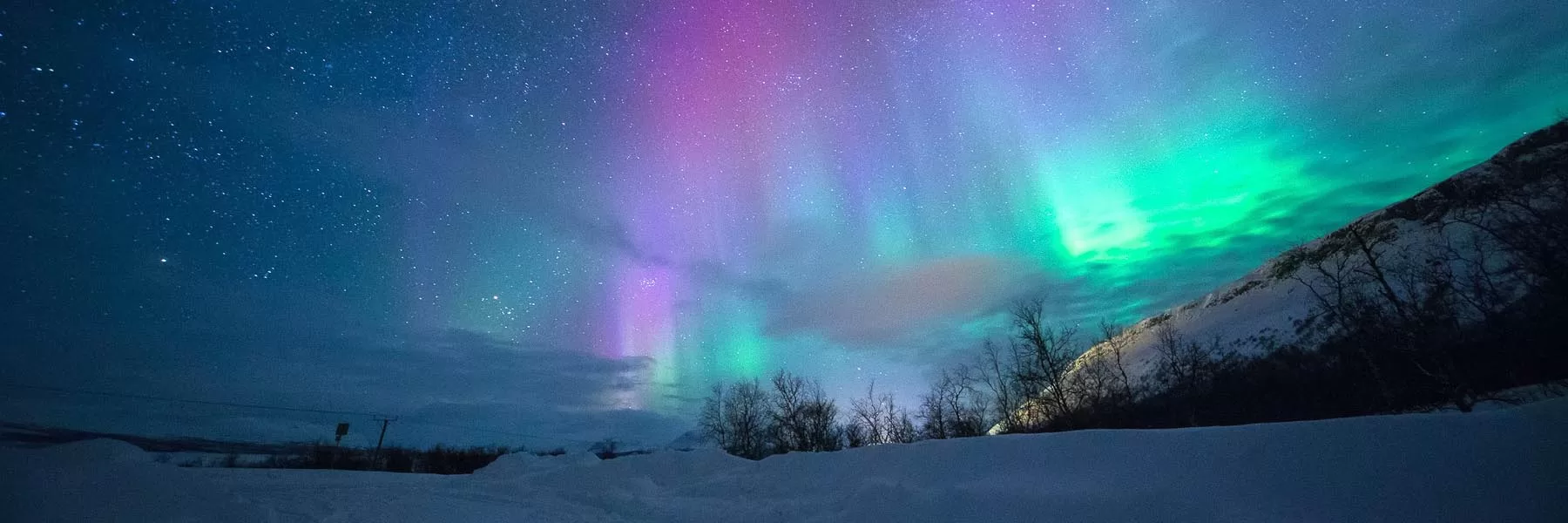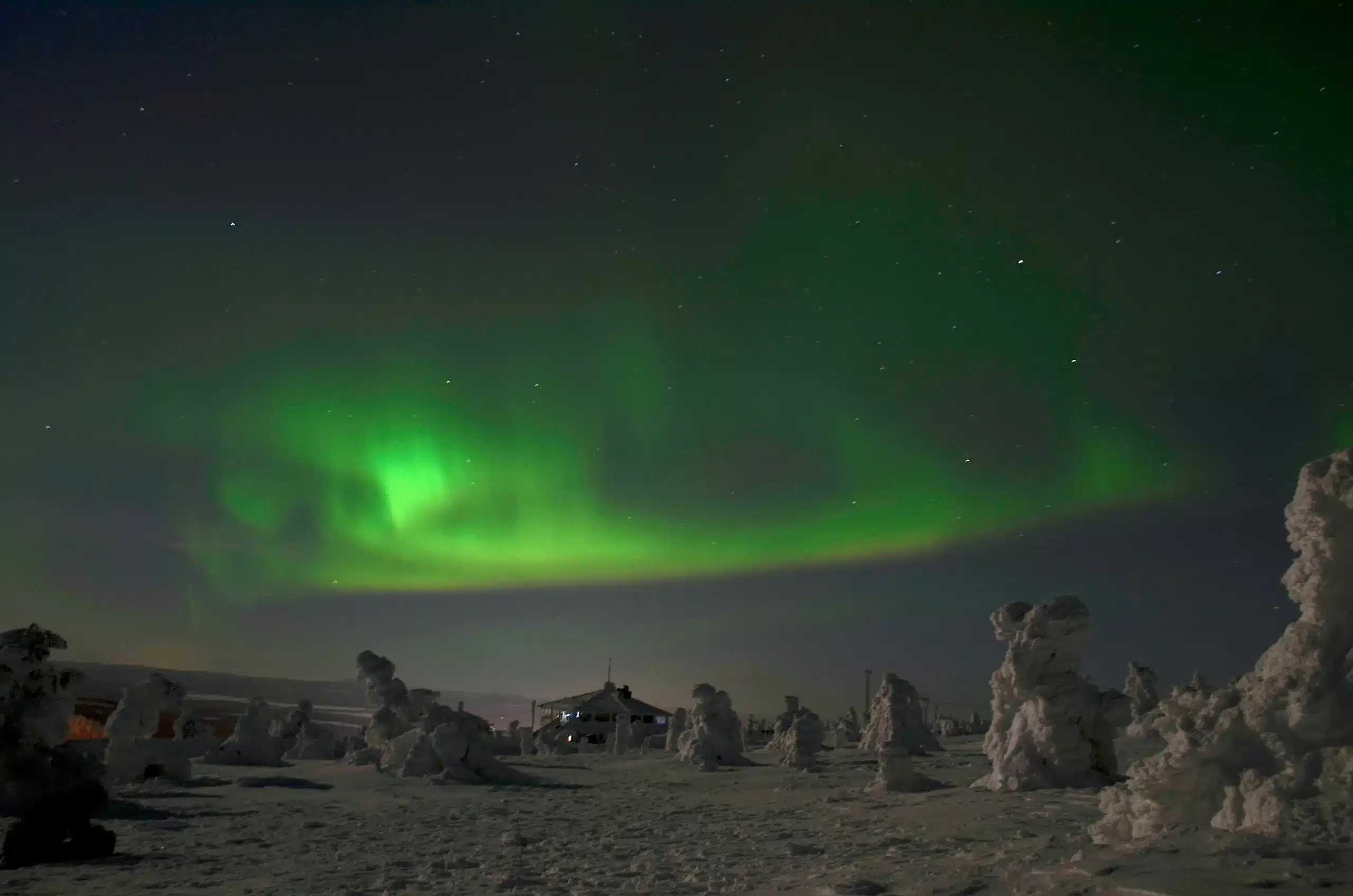As per Norse mythology, the aurora was a fire bridge to the sky built by the Gods. Some even considered the northern lights to be the harbingers of war and death. While such superstitions and speculations have died down, many still do not understand the scientific explanation behind this ethereal phenomenon.
The mighty Sun sits 151 million kilometers away from the Earth, but the solar particles generated from its surface hurtle across space towards the planets. These clouds of gas are termed Coronal Mass Ejection (EJE). They reach the Earth in 2-3 days and collide with our planet’s magnetic field. These collisions generate currents of charged particles that follow Earth’s magnetic field towards the poles. In the upper atmosphere of the polar regions, these particles collide with oxygen and nitrogen atoms. The electrons of these atoms move from low-energy orbit to high-energy orbit and back again. These “excited” electrons release particles of light, called photons, which produce dazzling displays of light.

While the most common colors are pale green and pink, auroras in shades of blue, yellow, red, and violet can also be spotted. The color depends on the gas that the solar particles collide with. Magnetic nitrogen causes purple displays and atomic nitrogen cause blue ones. The lights of Auroras can extend anywhere between 80 and 640 kilometers above the surface of the Earth. Altitude also plays a part in the color; blue lights appear below 100 kilometers, violet and purple lights occur above 100 kilometers, green lights appear 240 kilometers high, and red appears above 300 kilometers.
Sunspots and solar storms cause the most majestic northern lights, and they recur every 11 years, as part of the solar cycle. Solar events contribute to these beautiful sights, but they also disrupt power grids and communication and are therefore closely monitored. While the magnetic field of our planet successfully deflects most of the solar radiation, some particles still seep in and interact with the atmosphere to produce the dazzling aurora.
Where to see the Northern Lights?
The phenomenon occurs near the magnetic poles of the Earth and is visible in Norway, Greenland, Iceland, and Siberia. They are also visible as far south as New Orleans in America, Alaska, and northwestern parts of Canada. When solar flares are at their peak, you can even spot the Northern Lights from the northern parts of Scotland and England. The best places to see the Northern Lights are areas away from the city, unhindered by light pollution.
When to see the Northern Lights?
Although the lights occur throughout the year, the best season to view them is winter, when the light pollution is at its minimum and air is clear and crisp. The best months to view the Northern Lights are September, October, March, and April. The lights are at their brightest up to two days after any significant sunspot activity.
While it’s true that the Northern Lights are no longer as mystifying as they used to be, their beauty is still otherworldly and it fires your imaginations to visualize Gods and fire bridges.

So there you have it! The Northern Lights are like nature’s very own light show, painting the sky with vibrant hues and filling us with wonder. It’s like watching magic happening right before our eyes! Whether you have witnessed them live or just dreaming about it, one thing’s for sure: these lights remind us of the incredible beauty of our planet. So let’s keep looking up because you never know when you might catch a glimpse of the aurora borealis dancing across the night sky. It’s a reminder that there is so much out there to explore and appreciate.
If you loved reading this story, then subscribe to our blog here (it will ask to verify your email) to get inspiring travel stories and trivia delivered to your email. Stories about wildlife trivia, cultural experiences, curated luxury hotel lists, underrated places to travel, polar journeys and much more.












